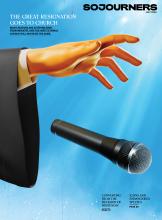LEST YOU THINK labor organizing started with the most recent Amazon or Starbucks unionization, let’s look at this ancient document found submerged near the island of Patmos. The document appears to be from another group of mammals negotiating what is believed to be the first collective bargaining agreement.
Letter of Demands
From: The International Animals Union
To: Noah
Subject: Excessive Rainfall
Whereas the earth has become corrupt and filled with violence and
Whereas God has decided to destroy all living creatures and
Whereas Noah is required to build an ark and bring a pair of every kind of animal on the ark, therefore
Noah and the International Animals Union agree that the previous agreement has been terminated and replaced by the following agreement beginning on the 17th day of the second month and ending after 40 days and 40 nights, unless it rains the whole time.
I. Breaks
All animals shall be given 15-minute breaks for naps, whenever they feel like it. (We’re assuming any human over 600 years old on the ark will likewise be taking multiple naps per day.) Breaks can be used for whatever animals want, including but not limited to gathering around the water trough to talk about the change in rain patterns for the day.
II. Schedule Assignments
All animals shall be given their work assignments a week in advance via pigeon post delivered on papyrus. On holidays, work assignments shall be delivered on parchment. Ravens and doves are available for special work at the end of the cruise.
III. 40-Hour Work Week
Read the Full Article

